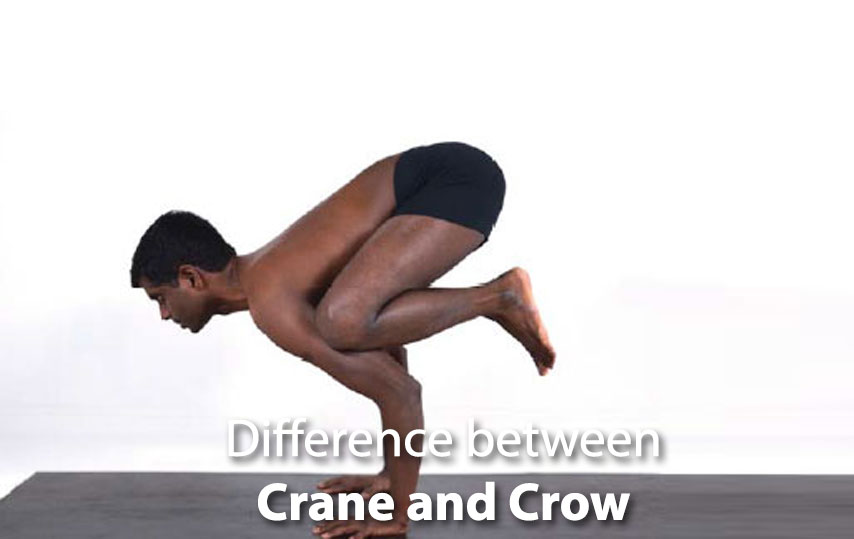Crow

Of the two poses, crow pose is easier to achieve.
(1) Start with squatting and bring the upper arms in front of the shins.
(2) With knees slightly out off the armpits, place the hands on the mat in front of the feet.
(3) Bend the elbows like in Chaturanga. Lift the heels and snuggle the thighs into the shoulders while reaching forward. (4) Keep pressing the shins into the back of the upper arms with an inhale, lift up the hips and move forward.
(5) Focus the gaze forward.
Crane

The Crane pose is much more challenging than Crow.
(1) While doing Crane pose, the arms need to be straight.
(2) Press the knees onto the back of the upper arms, then use the feet to help nudge the pelvis and move the ribcage forward.
(3) Use the breath and take time doing it.
(4) Feel the hands. As you move your body forward, you can feel the weight of the body pressing through your hands.
Even though this is a challenging pose, with proper and constant practice, as well as guidance, you will in no time be able to achieve perfection in the crane pose.
I hope now you can better understand the differences between these two pose. Keep the practice and have fun.


















 Other
Other